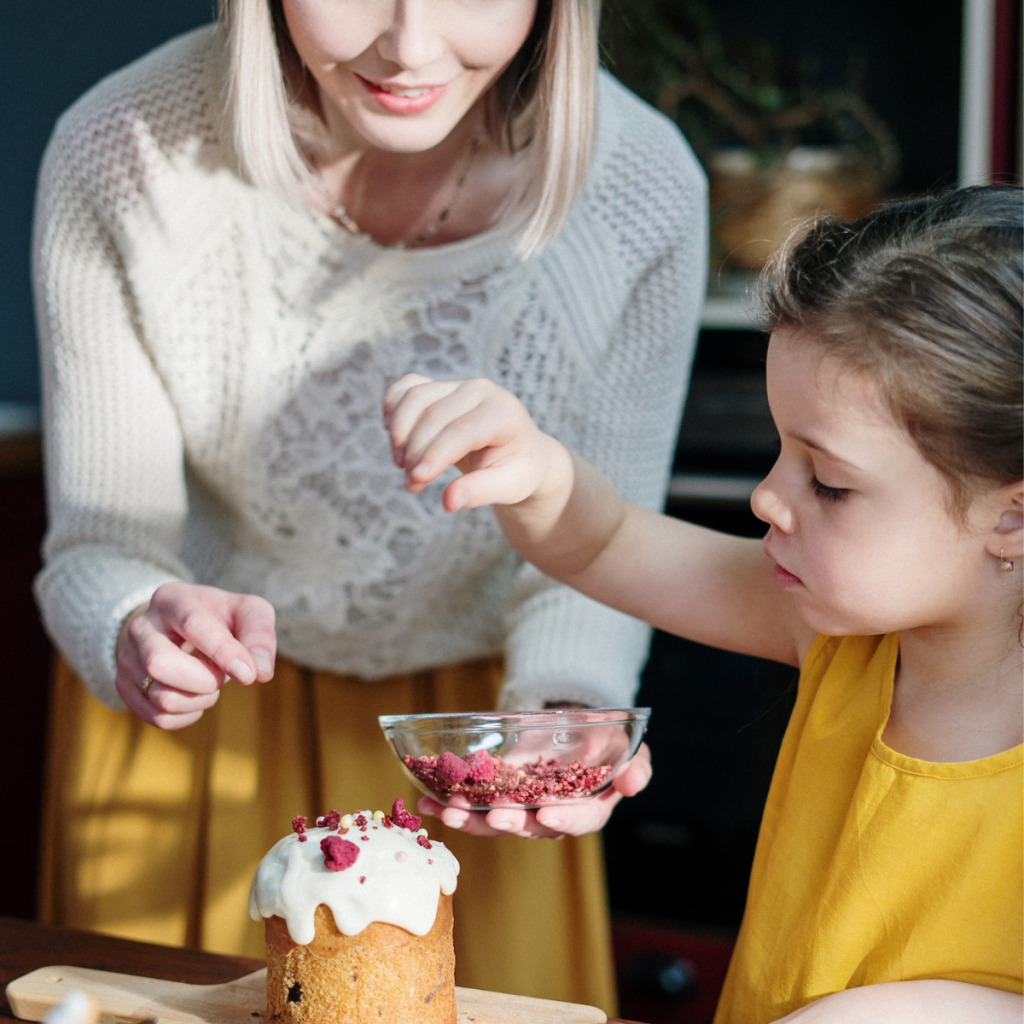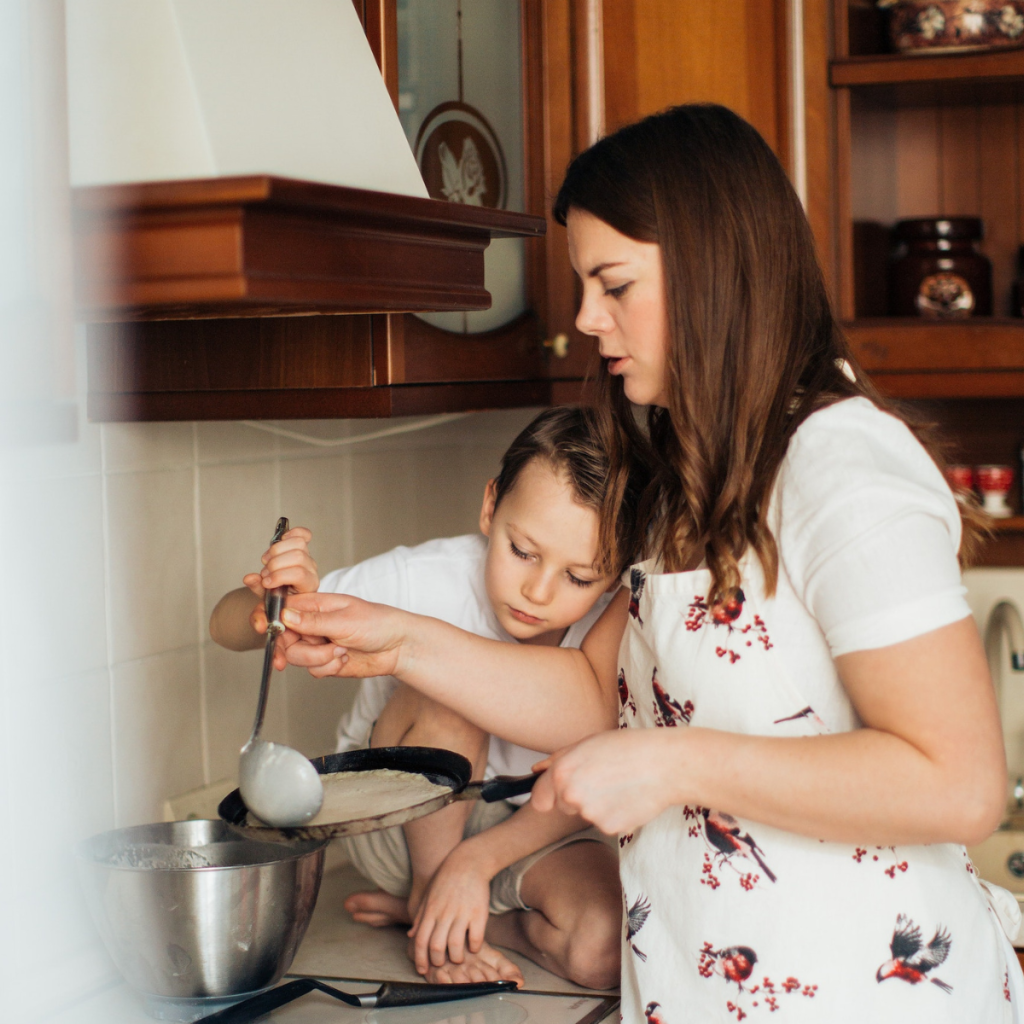Discover effective strategies and tips for teaching cooking to 4-5 year old children.
How to Teach Cooking to 4-5 Year Old Children
Are you ready to embark on a delicious adventure with your little chefs? Teaching cooking to 4-5 year old children is not only a delightful way to spend quality time together, but it also serves as a valuable life skill that they will carry with them as they grow. In this article, we will explore the importance of teaching cooking to young children and provide you with practical tips to make their culinary journey safe, educational, and fun!
Understanding the Importance of Teaching Cooking to Young Children

Why should we let our little ones take charge in the kitchen? Well, besides the sheer joy of watching their miniature chef hats bobbing about, there are plenty of benefits that come with early culinary education.
When we involve young children in cooking activities, we provide them with a hands-on learning experience that goes beyond just preparing a meal. Cooking with young children can ignite their creativity, boost their confidence, and enhance their fine motor skills. As they learn to measure ingredients, mix them together, and witness their delicious creations come to life, they develop a sense of empowerment and accomplishment.
Furthermore, involving children in cooking activities allows them to explore different flavors, textures, and colors. By encouraging them to try new ingredients and experiment with various recipes, we nurture their curiosity and expand their palate. This can have a lasting impact on their eating habits, making them more open to trying new foods and becoming more adventurous eaters.
Not to mention, cooking with young children is a fantastic opportunity to bond and create lasting memories together as a family. As we gather around the kitchen counter, we share stories, laughter, and the joy of creating something delicious from scratch. These shared experiences strengthen family connections and create a positive association with food and cooking.
The Benefits of Early Culinary Education
Cooking with young children goes beyond just the immediate benefits of creativity and confidence-building. It also lays a foundation for lifelong skills and healthy habits. By involving children in the kitchen from an early age, we teach them important life skills that they can carry with them into adulthood.
As children learn to follow recipes, measure ingredients, and understand cooking techniques, they develop essential math and reading skills. They learn about fractions, measurements, and the importance of following step-by-step instructions. These skills not only support their academic growth but also contribute to their overall development and problem-solving abilities.
Moreover, cooking with young children can instill a sense of responsibility and independence. They learn to take ownership of their tasks, whether it’s washing vegetables, stirring a batter, or setting the table. This fosters a sense of self-reliance and helps them develop practical life skills that will serve them well in the future.
Safety Considerations for Young Chefs
Before diving into the world of yummy concoctions, it’s crucial to establish some ground rules to ensure everyone’s safety. Teaching young children about kitchen safety is an essential part of their culinary education.
First and foremost, explain the importance of washing hands before cooking. Emphasize the need to maintain cleanliness and hygiene in the kitchen. Introduce them to basic kitchen safety practices, such as using oven mitts when handling hot pots and pans, staying away from hot surfaces, and being cautious around sharp knives and other kitchen tools.
Remember, adult supervision is paramount when teaching cooking to young children. While it’s an exciting learning experience, we should always prioritize their safety in the kitchen. By setting clear boundaries and providing guidance, we can ensure that cooking becomes a fun and safe activity for everyone involved.
Preparing Your Kitchen for Little Cooks
Introducing your children to the joys of cooking can be a wonderful bonding experience and a great way to teach them important life skills. Before handing your pint-sized chefs their aprons, it’s essential to equip them with the right tools and create a child-friendly cooking space. By doing so, you can ensure that they have a safe and enjoyable culinary adventure.
Choosing the Right Tools and Equipment
When it comes to selecting tools and equipment for your little cooks, safety should be your top priority. Opt for child-friendly knives with rounded edges to minimize the risk of accidents. These knives are designed to be safe for children to use, allowing them to practice their cutting skills under your supervision.
In addition to knives, small mixing bowls and measuring cups that are easy for their little hands to grasp are essential. These tools will enable them to actively participate in the cooking process and learn through hands-on experience. By having their own set of utensils, they will feel a sense of ownership and responsibility, fostering their independence and confidence in the kitchen.
Setting Up a Child-Friendly Cooking Space
Transforming your kitchen into a haven for your little ones can make the cooking experience even more enjoyable. Creating a designated cooking area just for them will give them a sense of ownership and make them feel like real chefs. Lower countertops or tables can provide a comfortable workspace, allowing them to reach ingredients and utensils easily without straining or feeling overwhelmed.
Furthermore, organizing your ingredients in labeled containers can help them understand and practice basic organization skills. By having everything in its place, they will learn the importance of tidiness and efficiency in the kitchen. This simple step can also make the cooking process smoother and more enjoyable for both you and your little chefs.
Consider decorating their cooking space with colorful and engaging posters that showcase different fruits, vegetables, and kitchen tools. This can spark their curiosity and encourage them to explore new ingredients and cooking techniques. Additionally, having a step stool nearby can give them a boost when they need to reach higher shelves or use appliances that are placed out of their reach.
Remember, creating a child-friendly cooking space is not only about the physical setup but also about fostering a positive and encouraging atmosphere. Make sure to praise their efforts, celebrate their successes, and be patient with their mistakes. By creating a nurturing environment, you can instill a love for cooking in your little ones that will last a lifetime.
Developing Age-Appropriate Cooking Lessons
Now that the stage is set, it’s time to plan some exciting cooking adventures that are perfectly tailored to the capabilities and interests of 4-5 year olds.
Introducing young children to the world of cooking can be a delightful and educational experience. Not only does it teach them important life skills, but it also encourages creativity and fosters a sense of independence. By providing age-appropriate cooking lessons, you can help cultivate a lifelong love for food and cooking in these young minds.
Identifying Suitable Recipes for 4-5 Year Olds
When selecting recipes, keep in mind that simplicity is key. Opt for recipes with minimal steps and readily available ingredients. Start with easy dishes like fruit salads, sandwiches, or homemade pizzas. These recipes allow your budding chefs to practice their chopping, spreading, and assembling skills while having a blast in the kitchen.
For example, a fruit salad can be a great way to introduce children to different fruits and their vibrant colors. Let them explore the textures and tastes as they carefully chop soft fruits like bananas or slice juicy watermelons. Encourage them to arrange the fruits in a visually appealing manner, creating a masterpiece of colors and flavors.
Similarly, making sandwiches can be a fun and interactive activity. Provide a variety of fillings like cheese, ham, and lettuce, and let the children assemble their own creations. Show them how to spread a thin layer of mayonnaise or mustard on the bread, and watch as their faces light up with pride when they take their first bite.
Breaking Down Cooking Techniques for Young Learners
Children thrive when instructions are presented in a clear and fun manner. Break down each cooking technique into manageable steps accompanied by colorful visuals. For instance, teach them about mixing by illustrating the motion of stirring with a spoon in a circular pattern. By making the learning process enjoyable and engaging, you’ll foster their love for cooking.
When teaching young learners about chopping, emphasize the importance of safety. Show them how to hold the knife properly and guide their hands as they carefully slice through soft ingredients like cucumbers or tomatoes. By instilling good habits from an early age, you are not only teaching them cooking skills but also promoting kitchen safety.
Furthermore, encourage creativity by allowing children to experiment with different flavors and textures. Let them add their own twist to a recipe by suggesting alternative ingredients or seasonings. This not only empowers them to make decisions but also sparks their imagination and curiosity.
Remember, cooking with young children is not just about the end result but also about the process. Embrace the messiness and the occasional mishaps, as these are valuable learning opportunities. By creating a positive and supportive environment, you can help build their confidence and instill a lifelong passion for cooking.
Making Cooking Fun and Engaging

Incorporating Play into Cooking Lessons
Transform your kitchen into a playful wonderland! Encourage imaginative play by providing chef hats, aprons, and pretend food items or toys. Let your little ones become the star of their very own cooking show by assigning them roles such as head chef, recipe reader, or sous-chef. With a sprinkle of creativity, every activity in the kitchen can turn into a delightful game.
Using Storytelling to Teach Cooking Concepts
Capture your children’s attention by weaving captivating stories around the ingredients or dishes you are preparing together. For example, tell them a magical tale about the brave little tomato exploring a delicious garden. Engaging their imagination and making connections between food and storytelling will keep them hooked and eager to learn more.
Nurturing Healthy Eating Habits Through Cooking
Teaching Children About Nutrition While Cooking
Introduce your little chefs to the wonders of nutrition by discussing the benefits of different ingredients. Teach them about the vibrant colors of fruits and vegetables and how each color corresponds to specific health benefits. Engage them in conversations about how food fuels their bodies and the importance of making healthy choices.
Encouraging Adventurous Eating Through Hands-On Cooking
By involving children in the cooking process, you empower them to take ownership of their food choices. Encourage them to explore new flavors and experiment with different ingredients. Let them be the decision-makers by allowing them to choose one new ingredient to try in every dish they prepare. You’ll be amazed at how willing they are to try new things when they feel a sense of pride in their creations!
Now that you have all the ingredients for successful cooking adventures with your 4-5 year olds, it’s time to put on those aprons, grab your spatulas, and embark on a journey of flavor and fun! Get ready to create lifelong memories and instill a love for cooking in your little ones that will carry them through a lifetime of delicious adventures. Happy cooking!



